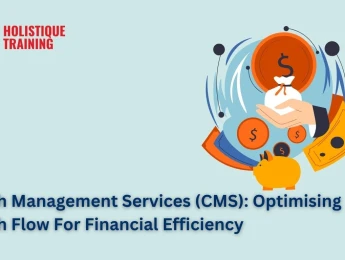It is essential to have a strong understanding of ergonomics within any industrial organisation. Ergonomics is the process of increasing employee safety by making adjustments to industry processes and equipment. Many highly successful organisations in ergonomics often follow the concept of ‘matching the job to the worker.’
To truly increase employee safety, the organisation must first identify all potential risks and hazards. These can relate to the nature of the job itself, the equipment used, and more. Once these risks have been identified, the organisation should create a risk management plan to highlight preventive measures to reduce the chance of risks occurring.
Furthermore, an effective method of increasing ergonomics is focusing on the employees. Many internal influences can dictate how they carry out their roles, and stressed or overly tired employees may be more likely to make a mistake. As the employer, the organisation must provide adequate facilities so employees can eat, rest, and relax as necessary.
Upon completion of this course, participants will be able to:
- Understand the importance of maintaining high standards of industrial ergonomics.
- Acknowledge the potential risks and consequences of poor ergonomics.
- Explain the various different conditions or injuries that may occur due to poor ergonomics.
- Explore methods of increasing workplace safety and reducing the frequency of injuries.
- Examine how equipment and machinery can be adjusted to be safer to use while maintaining the same level of productivity.
- Assess internal and external influences on human behaviour and how negative influences may increase the risk of human error.
This course is designed for anyone involved within an industrial organisation, particularly those within management roles. It would be most beneficial for:
- Operations Managers
- HSE Officers
- HR Personnel
- Compliance Officers
- Risk Managers
- Coaching and Development Managers
- Ergonomics Advisors
This course uses a variety of adult learning styles to aid full understanding and comprehension. Participants will review examples of established organisations and their approaches to ergonomics to highlight key factors that increase employee safety and possible areas for further improvement.
The participants will have the opportunity to participate in a variety of learning methods and exercises, including seminars, video material, group discussions, and practical activities. This combination of learning exercises ensures that the participants can develop a full and comprehensive understanding of the taught content and any related practical skills.
Day 5 of each course is reserved for a Q&A session, which may occur off-site. For 10-day courses, this also applies to day 10
Section 1: Introduction to Ergonomics
- Defining the term ‘ergonomics’ and its purpose and importance within an industrial organisation.
- Assessing what internal and external factors can influence ergonomics.
- Analysing industry standards and laws and regulations that may influence ergonomic procedures.
- Investigating what actions can lead to injury, and the most common injuries found within the industry.
- How to provide adequate medical care and make necessary adjustments to those with injuries.
Section 2: Risk Management
- The vitality of risk management when improving organisational ergonomics.
- Conducting risk and hazard assessments to identify all risks within the organisation.
- Analysing, categorising and prioritising risk data based upon different factors, including the potential of the risk and the potential harm it could cause.
- Creating a series of health and safety procedures that is accessible to all employees.
- Ensuring all functions are compliant with health and safety regulations.
Section 3: Tools and Equipment
- Investing in equipment and machinery with easily understandable safety mechanics.
- Comprehending the risks associated with each piece of equipment and implementing preventative measures to reduce harm potential.
- Designing unique tools ideal for a specific task that come with minimal risks.
- Ensuring all employees have the correct training and certifications to utilise machines and equipment.
Section 4: Employee Management
- Implementing strict procedures of equipment handling training to new hires.
- Engaging in regular coaching with new and experienced employees to encourage knowledge and skill development.
- Guaranteeing access to high-quality facilities so employees can replenish during breaks.
- Delegating tasks accordingly depends on the training and skill of employees.
- The concept of matching the job to the worker, not the worker to the job.
Section 5: Creating a Safe Work Environment
- Understanding the basic aspects of human behaviour.
- Exploring how different negative factors—stress, exhaustion, lack of praise, and more — can increase the possibility of human error.
- Providing rewards and incentives for task and project completion.
- Establishing health related facilities to encourage self-care – gym memberships, physiotherapy and more.
Upon successful completion of this training course, delegates will be awarded a Holistique Training Certificate of Completion. For those who attend and complete the online training course, a Holistique Training e-Certificate will be provided.
Holistique Training Certificates are accredited by the British Assessment Council (BAC) and The CPD Certification Service (CPD), and are certified under ISO 9001, ISO 21001, and ISO 29993 standards.
CPD credits for this course are granted by our Certificates and will be reflected on the Holistique Training Certificate of Completion. In accordance with the standards of The CPD Certification Service, one CPD credit is awarded per hour of course attendance. A maximum of 50 CPD credits can be claimed for any single course we currently offer.
- Course Code IND14-109
- Course Format Classroom, Online,
- Duration 5 days










